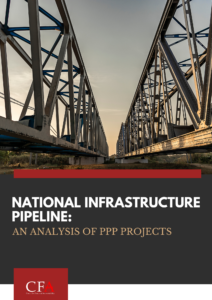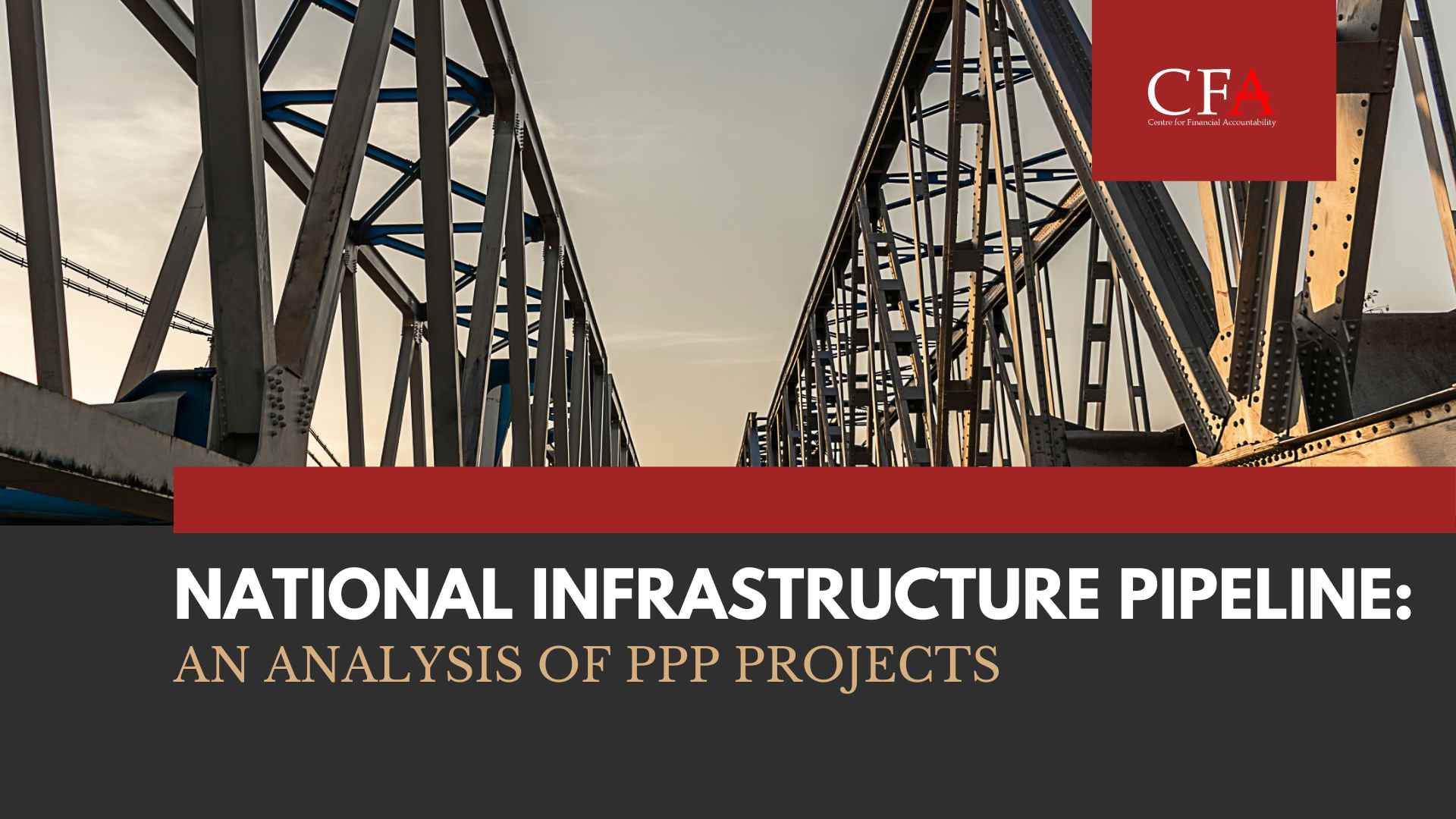Gaurav Dwivedi & Kenneth Gomes
 It is widely accepted that infrastructure is key to India’s economic growth. The Reserve Bank of India (RBI) has termed it as an important pillar for the continued economic growth in the country, with focus on developing world class infrastructure. The National Infrastructure Pipeline (NIP) was launched in December 2019, for a period of 5 years, and aims to improve project preparation and attract investments into infrastructure. As per the Task Force Report of National Infrastructure Pipeline, which was constituted to identify, analyse and suggest reforms in the infrastructure sector as part of the NIP, it is estimated that India would need to spend US$ 4.5 trillion on infrastructure by 2030 to sustain its growth rate and to realise the vision of a US$ 5 trillion economy by 2025.
It is widely accepted that infrastructure is key to India’s economic growth. The Reserve Bank of India (RBI) has termed it as an important pillar for the continued economic growth in the country, with focus on developing world class infrastructure. The National Infrastructure Pipeline (NIP) was launched in December 2019, for a period of 5 years, and aims to improve project preparation and attract investments into infrastructure. As per the Task Force Report of National Infrastructure Pipeline, which was constituted to identify, analyse and suggest reforms in the infrastructure sector as part of the NIP, it is estimated that India would need to spend US$ 4.5 trillion on infrastructure by 2030 to sustain its growth rate and to realise the vision of a US$ 5 trillion economy by 2025.
As will be discussed in detail in this report later, the need for the National Infrastructure Pipeline (NIP), and other initiatives, to encourage private participation in infrastructure development, at the intersection of pooling financial resources and technical expertise, was first observed as the Twelfth 5-year Plan (2012-17) projections for infrastructure investment saw a downward revision due to lesser actual private investments vis-a-vis the projections. According to the revised projections, investment (as a percentage of GDP) for the Twelfth Plan was down to 6.11 per cent, lower than the original projection of 8.18 per cent and 7 per cent achieved in the Eleventh Plan.
The quality of infrastructure is also of utmost importance given that expenditure on quality infrastructure in itself contributes to aggregate demand and growth, and also positively affects overall productivity, through creation of production facilities and encouraging economic activities or by reducing transaction costs and trade costs by improving competitiveness. More importantly, various infrastructural sectors, such as roads, ports, transport, railways, energy generation and transmission, are interlinked and share forward and backward linkages with each other and even other industries such as manufacturing and service.
As Hirschman had defined, a forward linkage is created when investment in a particular project encourages investment in other sectors which are associated with subsequent stages of production and a backward linkage is created when a project encourages investment in facilities that enable the project to succeed, i.e. the industries from where the industry sources its factor of production from. This suggests that the initial investments from public, union and state, in quality infrastructure has the potential to crowd ‘in’ private investment in the various infrastructural sectors and at various stages of production.
In this context, the task force for NIP also noted that India ranked 68th, out of 141, in the Global Competitiveness Index, 2019. The ranking is determined on the basis of countries’ performance on various indicators such as institutions, infrastructure, macroeconomic stability, health and others. In infrastructure, India was ranked 70th out of 141 countries. The report states, “Quality of infrastructure is among the biggest hurdles facing the Indian government’s ambitious programme, called “Make in India,” which aims to improve the nation’s manufacturing capabilities and support higher growth for generating employment.”
Read and Download the report here: National Infrastructure Pipeline: An analysis of PPP projects.
Centre for Financial Accountability is now on Telegram. Click here to join our Telegram channel and stay tuned to the latest updates and insights on the economy and finance.

